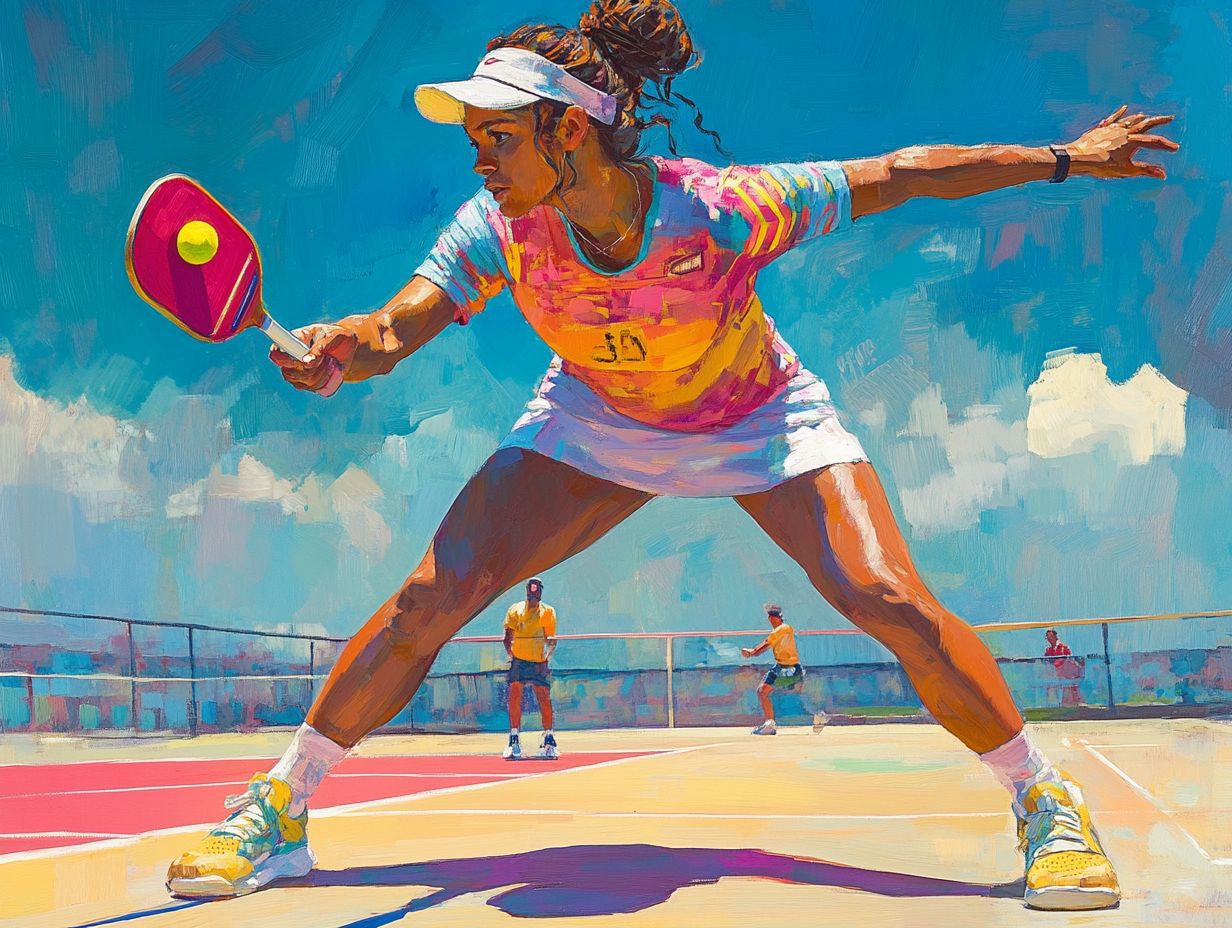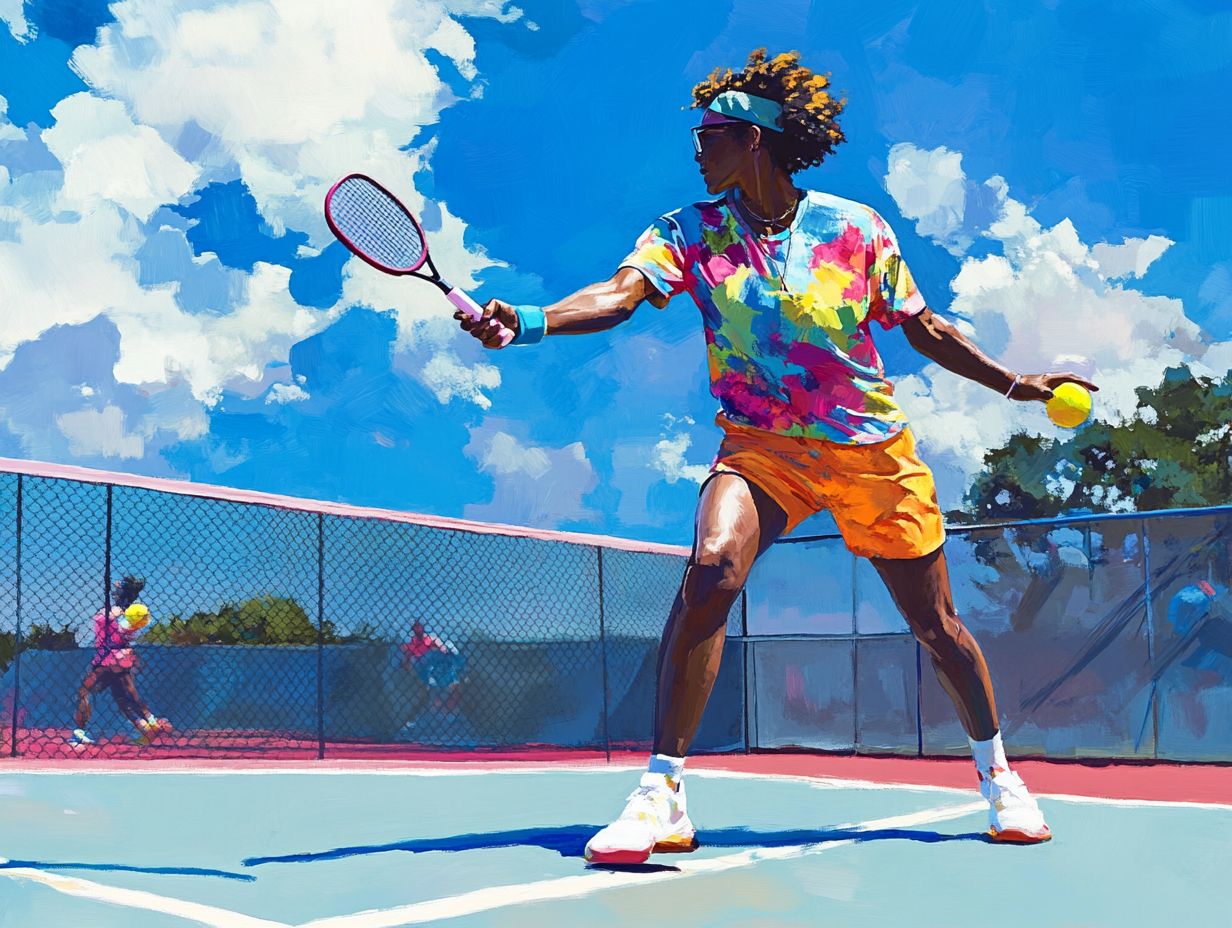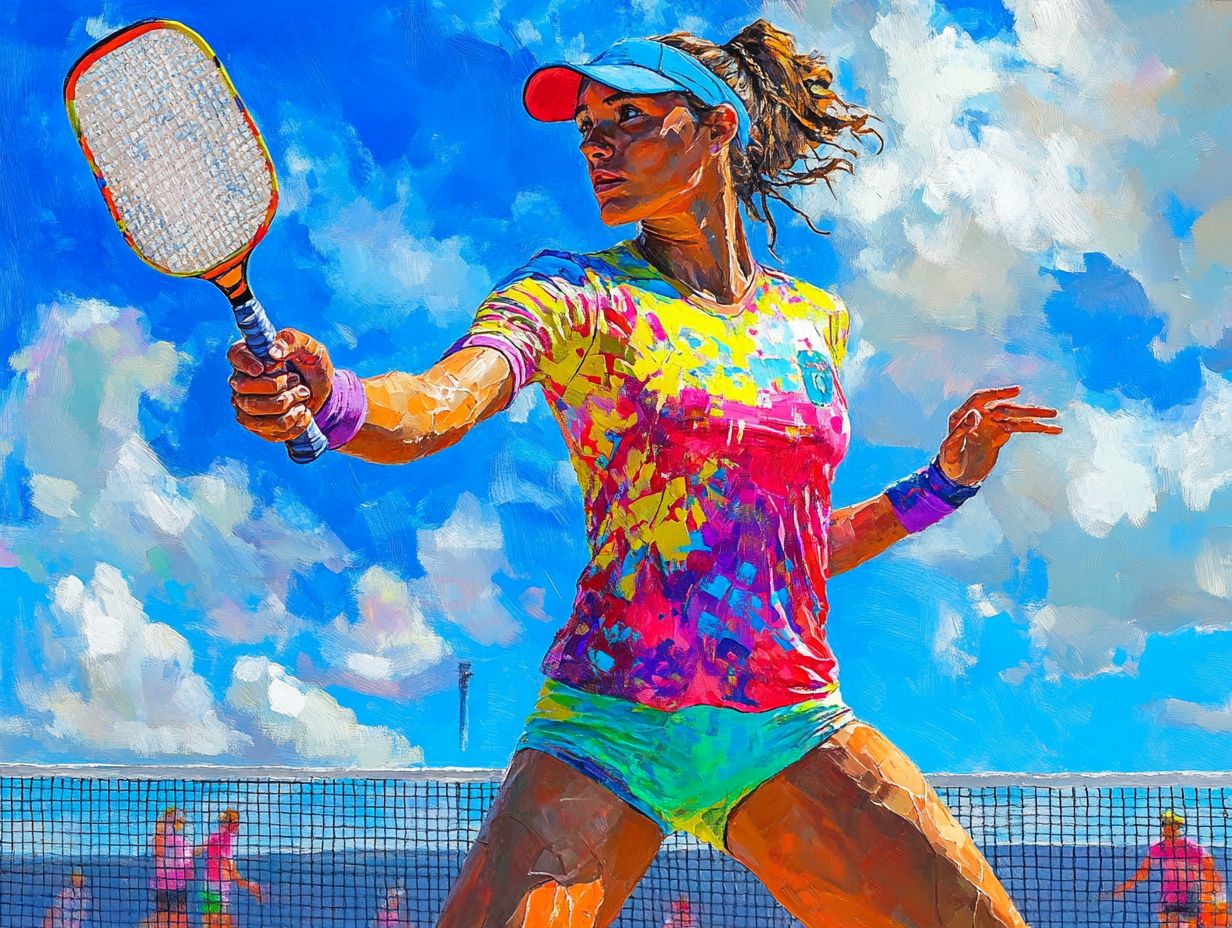In pickleball, the serve is your opening move and sets the tone for the entire game. A strong serve not only puts pressure on your opponent but also provides you with a strategic advantage right from the beginning.
This article will explore the essential techniques for executing a successful serve, covering everything from basic grips and stances to advanced strategies that incorporate spin and power.
Additionally, we will highlight common mistakes to avoid and offer practical tips to enhance your serving skills, ensuring you step onto the court with confidence.
Are you ready to elevate your game? Let’s get started!
The Importance of a Strong Serve in Pickleball

A strong serve in pickleball is crucial because it provides players with an initial advantage during a match and significantly influences the overall rhythm and pace of the game. Mastery of various serving techniques can determine the outcome of many rallies, allowing players to control the pace and placement of the ball on the court.
However, a strong serve in pickleball is not solely about hitting the ball with power. Players must develop serving strategies that incorporate speed, control, and precise placement to outmaneuver their opponents and exploit their weaknesses.
Understanding the essential elements of serving is vital for players at all levels, from beginners to competitive athletes.
Understanding the Role of the Serve in the Game
The serve in pickleball is crucial because it marks the beginning of each rally and serves as the first point of contact between opponents, influencing both offensive and defensive strategies on the court. When executed correctly, a well-planned serve allows players to dictate the pace and positioning of the game.
Various serving techniques, such as the underhand, topspin, or drive serve, can help players score points and create favorable conditions for the ongoing rally. Proper serving mechanics enhance the speed and accuracy of the ball while positioning players effectively on the court, preparing them to receive the return serve.
This ability to control the game from the outset makes mastering the serve one of the most important skills for achieving success in pickleball.
Basic Techniques for a Successful Serve
Effective serving techniques in pickleball involve maintaining the correct grip, employing proper footwork, and understanding the angles and depth of the serve.
Grip, Stance, and Swing

Grip, stance, and swing are fundamental elements of serve mechanics that significantly influence the power and accuracy of a pickleball serve. Each type of grip—continental, eastern, or western—affects how the ball is struck, as well as its spin and trajectory. For instance, a continental grip is more versatile, enabling a player to execute both a topspin serve and a slice serve, while an eastern grip tends to produce a more standard flat serve.
The proper stance, characterized by shoulder-width distance between the feet, weight on the balls of the feet, and slightly bent knees, provides a solid base and balance for the player. Maintaining balance is essential, as a strong stance not only facilitates an effective swing but also ensures that momentum is directed appropriately, enhancing the overall effectiveness of the serve.
Engaging in drills that emphasize the repetition of these elements can yield significant improvements in serving performance.
Advanced Serve Techniques
Advanced serving techniques in pickleball, such as the spin serve, topspin serve, and slice serve, can significantly enhance a player’s effectiveness on the court.
Adding Spin and Power to your Serve
Adding spin and maximizing power to a serve can make it more challenging for opponents to return, thereby improving a player’s serve success percentage during matches.
To master effective serve execution, it is essential to understand the mechanics of ball placement, grip, and follow-through. A useful drill for developing specific spin application involves tossing the ball and then hitting it with a preferred level of spin or speed.
Practicing without a racquet, focusing on explosive leg drive and shoulder rotation, can also help build power. Players should experiment with various grips and racquet angles to discover different spin patterns, as this creates a diverse serve strategy that can disrupt an opponent’s rhythm and force them to adjust their positioning, leading to unforced errors.
Regularly practicing these advanced drills is crucial for enhancing serve success.
Common Mistakes to Avoid

Identifying and correcting common mistakes in serve mechanics is crucial for enhancing a player’s overall serving ability and ensuring consistent performance during matches.
Identifying and Correcting Flaws in your Serve
You can enhance your serving consistency by identifying and addressing specific flaws in your serve performance through practice and serve analysis. By conducting regular and thorough analyses of your serve, you can pinpoint areas that require improvement, which may include grip, stance, and follow-through.
Utilizing video playback or working with a knowledgeable coach can provide valuable insights and feedback that players may overlook themselves, visually exposing them to their flaws. Common serve faults, such as improper toss height and inconsistent ball placement, can be corrected through targeted drills.
Implementing strategies like repetitive practice of specific elements of the serve can improve both reliability and consistency, ultimately enhancing your overall serving performance.
Tips for Improving your Serve
Enhancing your serve in pickleball requires commitment and a systematic approach, which encompasses serving tips, serve drills, and a consistent practice schedule.
Drills and Strategies for Practice

Intentional serve drills and practice routines significantly enhance serve effectiveness by offering targeted feedback for improvement. These routines focus on key fundamentals such as accuracy, power, and spin.
Serve Accuracy: Accuracy drills are designed to improve a player’s ability to hit specific targets within the service box. Players can place cones or other markers as targets and aim to hit them during practice. A more structured drill involves designating different zones within the service box and attempting to hit those areas with precise ball placements. Effective targets can include serving wide, down the T, or in the middle of the box.
Serve Power: Power drills concentrate on strength and explosive training exercises to increase the intensity of the serve. These exercises may include explosive lunges, medicine ball throws, and plyometric box jumps, all aimed at enhancing serve power.
Serve Spin: Spin drills focus on specific grips, wrist angles, and body rotations to help players master various serve types. Drills for practicing spin include kick serves, slice serves, and top-spin serves.
Continuous feedback is crucial for improving serve effectiveness as it helps players identify their strengths and weaknesses. Practical drills can provide this feedback effectively. One method to gain insight into serving performance is through randomized drills, where players serve the same number of balls to different locations. Athletes can track which serves were in or out, measure their speed, and assess their overall performance based on this data.
Mastering the Mental Game of Serving
Mastering the mental aspect of the game is just as important as physical techniques when it comes to serving. A strong serving mentality and mental focus can significantly impact performance during competitions.
Developing Confidence and Strategy on the Court
Confidence and a tactical mindset when serving can help players read their opponents’ positions and adjust their serving strategies in real time. Developing this self-assuredness is typically achieved through focused and frequent practice, during which players work to perfect their mechanics, experiment with different serving techniques, and adapt to various court surfaces and environments.
The most effective practice sessions involve recreating competitive scenarios that help players tailor their serves based on the patterns and movements of different opponents. Additionally, mental training activities that enhance concentration during serving can significantly improve a player’s overall performance.
Reviewing previous matches can also be beneficial, as it allows players to understand how opponents have responded to certain serves, enabling them to refine their approach for future games.

Pickleball’s more than a game to me—it’s a passion. I write, sharing its highs and lows, the thrills and the lessons. Some tales might draw you to the court, while others give a hint of the game’s magic. So, curious about my journey? Ready to dive deep into the world of pickleball with me? Let’s go.
